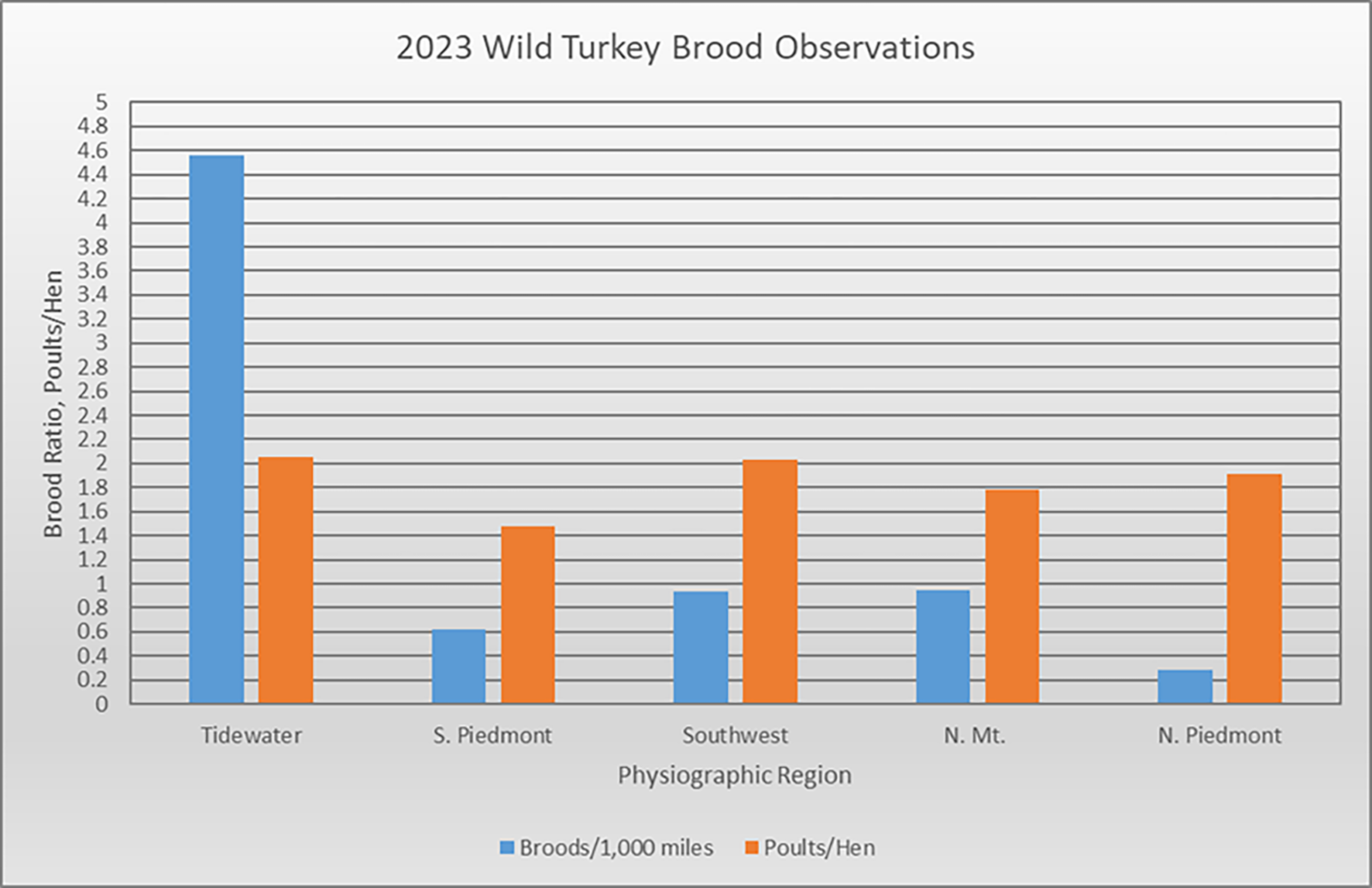By Katie Martin/DWR & Mike Dye/DWR
Photos by Meghan Marchetti/DWR
Through the months of July and August, the Virginia Department of Wildlife Resources (DWR) staff and cooperators completed the annual turkey brood survey. The survey provides an index to productivity of wild turkey reproduction and can assist in making management decisions. The survey counts the number of turkeys observed by staff and cooperators as they go about their normal day-to-day business and is expressed as the number of turkeys observed per 1,000 miles driven and the number of poults (juvenile turkeys) observed per hen. The Department would like to thank the many volunteers of the Virginia National Wild Turkey Federation chapters, DWR Complementary Work Force and Hunter Education Instructors, numerous teachers, and the Virginia Master Naturalists for their survey participation in 2023! Data is also collected by partners from Virginia State Parks, Virginia Department of Forestry, and several military installations.
In 2023, DWR received 190 reports by observers driving over 221,000 miles during July and August. Sixty-six percent of observers reported seeing at least one turkey during the survey time period. The overall number of turkeys staff have observed in the summer has declined since 2015.
In 2023, the total number of turkeys observed fell below the long-term average (17.7/1,000 miles) to 7.36 birds per 1,000 miles, an all-time low since survey inception in 2007. This ratio peaked in 2014 (29.4) and 2015 (30) and has been declining since.

Turkeys observed per 1,000 miles by staff during July and August (2007-2023) with long-term average.
The Tidewater Region had the highest ratio (24/1,000 mi.) and likely has the highest turkey population of any region in the state. The Southwest region had the next highest ratio with 8.7 birds per 1,000 miles, which is still lower than the 2022 ratio of 9.8 birds/1,000 miles for this region. The North Mountains (7.0), South Piedmont (4.6) and North Piedmont (3.1) were all significantly below the long-term survey average (17.7 turkeys per 1,000 miles). One bright spot is the increase (from 4.9 to 7 birds/1000 miles) for the North Mountain region.

Wild turkey brood observations by region, 2023.

Turkey brood data by region, July and August 2023
The 2023 annual survey suggests reproduction for wild turkey declined to a statewide average of 1.8 poults/hen, falling below the long-term survey average of 2.4 poults/hen and nearly identical to the 2022 ratio (1.9). This is a nearly 30 percent decline though from the 2021 ratio (2.7) and becomes the second lowest P/H ratio on record, which was 1.6 observed in 2018. The Poult/Hen ratio is our best measure of reproduction as it considers the number of poults produced by all hens. Complete brood loss is not uncommon, and those situations need to be incorporated when evaluating reproduction.

Poult/hen ratio (2007-2023) with long-term survey average.
Below average recruitment (P/H ratio) was reported across all regions in 2023 with the Tidewater having the highest (2.1) and the South Piedmont the lowest (1.4). Falling in the middle were the Southwest (2.0), Northern Mountains (1.8), and Northern Piedmont (1.9).
Wild turkey success in hatching and raising broods plays an important role in wild turkey populations and is especially important in fall harvests. Further, the ratio of young birds (poults) to the number of females (hens) is a critical index to reproduction (P/H). Lack of suitable nesting and brooding habitat continue to be likely factors in the decline of turkey reproduction across much of Virginia. For information on improving native habitats on your land visit: https://dwr.virginia.gov/wildlife/habitat/
This information is intended to monitor turkey population trends and densities but does not infer high hunter success or satisfaction while hunting.

